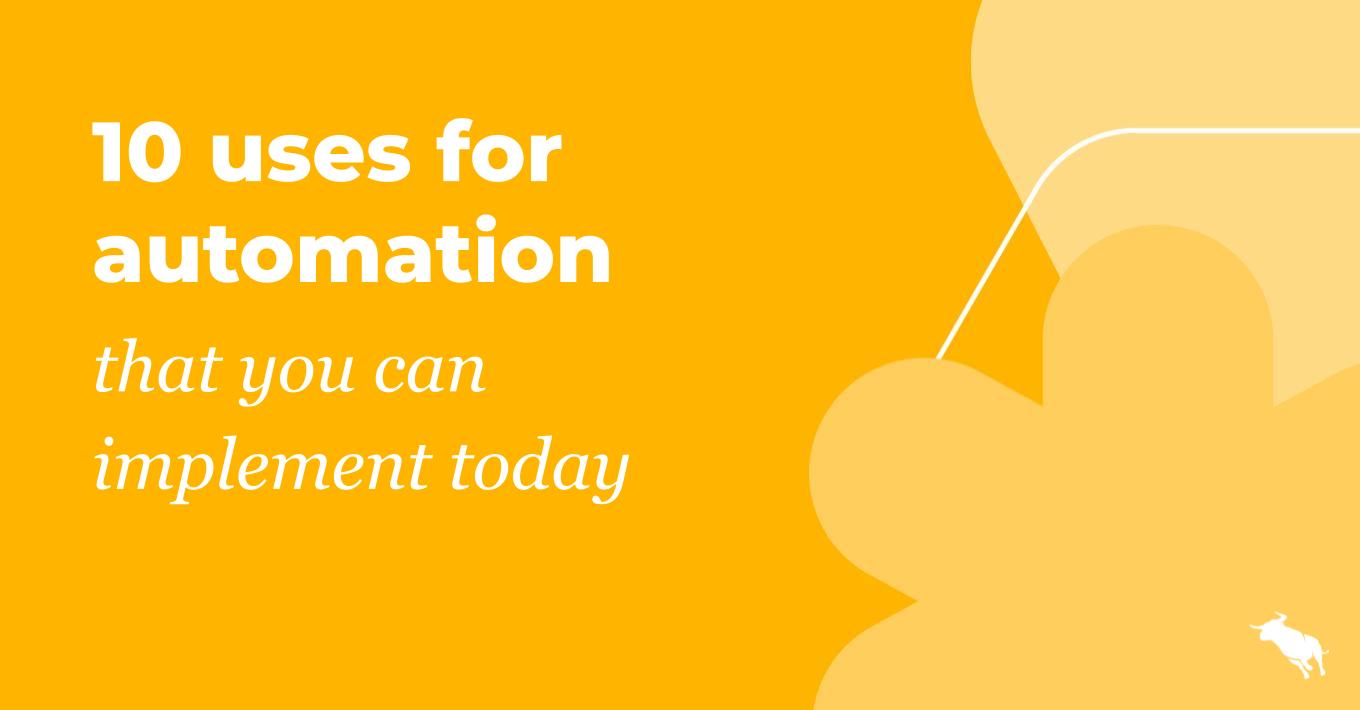10 uses for automation that you can implement today

Automation can be daunting. To date, Bullhorn users have automated over 1 billion tasks. With untold possibilities and use cases, it can be hard to know where to start.
But taking the leap is worth it. Our recent GRID Industry Trends Report found that staffing firms that automate their processes see 39% more submissions per head and fill 22% more jobs.
If you’re looking for a place to start – or you’re already an automation master and simply looking for more inspiration and ideas – look no further than existing Bullhorn customers.
In our recent Automation User Group, we sat down with Brian Cunningham, Managing Director of Allen Recruitment Consulting, where he shared how his team transformed their recruitment process with automation. Read on for some of his key takeaways and tips.
1. Automate follow-ups
One of the most impactful strategies Cunningham’s team implemented was automating follow-ups after initial contact. When a recruiter makes a call, an automated system follows up with a text and an email. This ensures no candidate is forgotten and keeps the process moving smoothly. “They are our most successful automations,” says Cunningham.
2. Utilize dynamic email content
Creating emails that dynamically generate personalized content, like, for example, links to Calendly for booking appointments or job details, has been a game-changer. Dynamic email content improves engagement rates and tailors communication to each candidate, which means recruiters from Allen Recruitment rarely need to cold-call candidates.
3. Broaden your candidate marketing
Instead of focusing narrowly on specific candidates, broaden your search criteria to include a wider range of potential fits. Send targeted emails to these candidates, highlighting job opportunities and encouraging them to engage with the recruitment process. When Cunningham and his team sent potential job fits to a larger group of candidates, “we’re getting responses from about 50-60% of people.”
4. Embrace AI for personalization
AI can be a powerful tool for personalizing communication. By referencing specific details like the candidate’s current job, skills, and previous interactions, you can create emails that resonate more effectively. Cunningham’s team has seen high open and click rates by making their emails relevant and timely.
5. Implement exception lists
Using exception lists can improve your automation strategy by ensuring candidates who aren’t interested or haven’t responded are excluded from future emails for a set period. “It’s best to leave candidates alone for 60 to 90 days, depending on the type of job,” Cunningham explained. Though candidates may not be looking for a job at that moment, they may be a better fit for a future role down the road – and preventing them from receiving unwanted communications improves their overall recruitment experience.
6. Focus on the human aspect
Automation should enhance, not replace, the candidate experience. By automating routine tasks and follow-ups, recruiters can spend more time engaging in meaningful conversations with candidates. This approach has allowed Cunningham’s team to focus on high-value interactions and build relationships with talent.
7. Continuous candidate engagement
Develop a system to keep candidates engaged even after they have been turned down for a role. Cunningham’s team sends periodic emails with job search tips and relevant job opportunities: “We send candidates links to material that they can look at in order to make them better at interviewing or presentations.” This not only helps in maintaining a relationship with potential candidates but also improves the chances of matching them with future roles.
8. Survey for better insights
Sending a survey to candidates immediately after they apply can provide valuable insights. Cunningham’s team asks about current salary, visa status, location preferences, and top skills. This information helps recruiters quickly filter and prioritize candidates. “When they looked at the results, our recruiters were able to filter out candidates based on those answers very quickly. I highly recommend building a survey automation,” Cunningham said.
9. Use automation for data management
Automating data updates ensures that candidate records are always up-to-date. For instance, by updating job titles, locations, and employers based on the latest interactions, recruiters can ensure their databases remain relevant and accurate. (For more ideas on how to use automation to clean your data, check out our guide to spring cleaning your database.)
10. Create a positive candidate journey
Develop content that provides value to candidates beyond job offers. This could include interview tips, CV/resume writing advice, or industry insights. By adding value, you build a relationship with candidates, making them more likely to engage with your communications.
Cunningham’s experience shows that thoughtful automation can significantly improve recruitment processes. With these automations incorporated into your recruitment workflows, you’ll reduce administrative burdens on your team, create a better experience for your candidates, and watch your agency transform.



